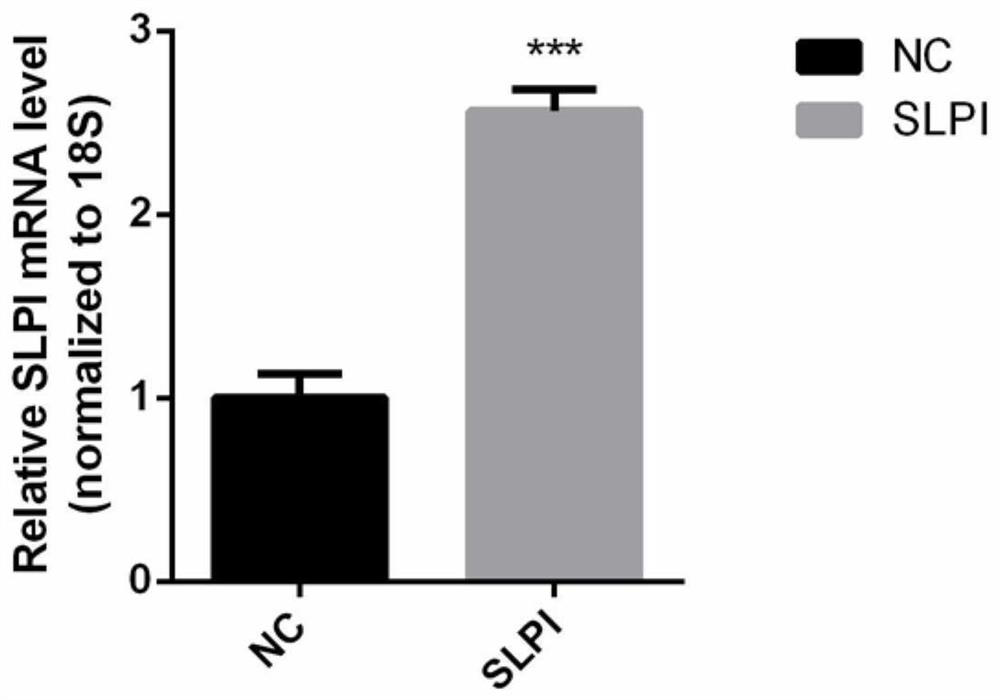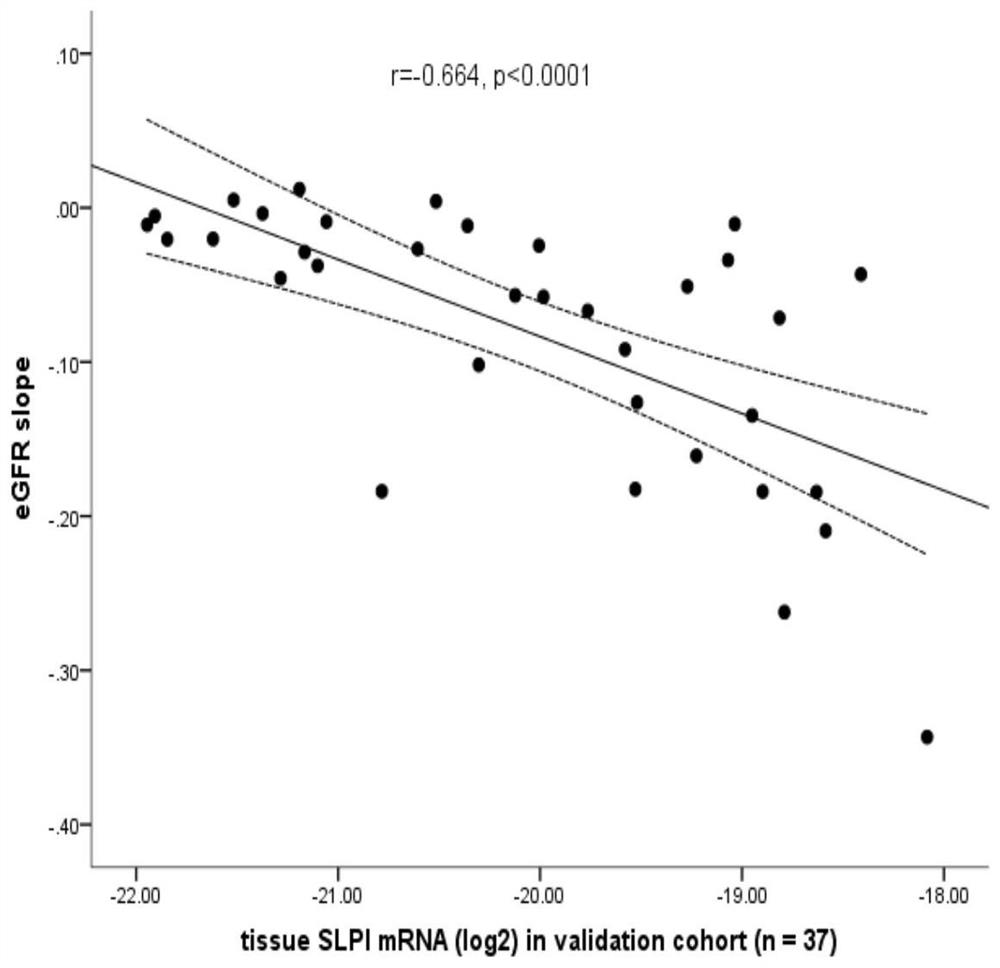Use of secreted leukoproteinase inhibitor slpi as a prognostic marker for diabetic nephropathy dn
A protease inhibition, diabetic nephropathy technology, applied in disease diagnosis, biological testing, analysis of materials, etc., can solve the problem of DN lack of renal prognostic markers and other problems, and achieve the effect of predicting prognosis
- Summary
- Abstract
- Description
- Claims
- Application Information
AI Technical Summary
Problems solved by technology
Method used
Image
Examples
Embodiment 1
[0022] Methodology for screening prognostic markers combining transcriptomic profiling and clinical indicators
[0023] (1) Acquisition of discovery queue
[0024] The cohort used for transcriptome sequencing in the present invention comes from the prospective DN cohort of Nanjing General Hospital and National Clinical Research Center of Nephrology. Among them, the conditions for DN patients to enter the group: a) age ≥ 18 years old; b) patients with type 2 diabetes (WHO diagnostic criteria) accompanied by DN admitted to the Nanjing General Hospital of Nanjing Military Region and the National Clinical Research Center for Kidney Diseases diagnosed by renal biopsy , excluding other concomitant renal diseases; c) signed informed consent; d) on the basis of complete routine pathological examination, with renal tissue micro-separation; e) at least 1 year follow-up, at least 2 eGFR follow-up points per year; DN was included in the group 61 patients. Clinical data such as renal tis...
Embodiment 2
[0030] Application of SLPI as a prognostic marker for DN
[0031] (1) RT-PCR
[0032] The renal tissue paraffin specimens of DN patients were sectioned to LEICA laser microseparation special sections, freshly prepared xylene for dewaxing, dehydrated with gradient alcohol, and then the renal tubular tissue was separated by laser microseparation, and the tubular tissue was extracted with the FFPE RNA extraction kit purchased from QIAGEN Company. The total RNA obtained from , was determined by a two-step method: the first step was reverse transcription, and the mRNA was reverse transcribed to synthesize cDNA according to the kit instructions. The reaction conditions were: 25°C, 10min, 37°C, 120min, 85°C, 5min; Step 2: Real-time PCR reaction, using SLPI and 18s as primers, the reaction conditions are: 95℃, 30s, 95℃, 5s, 60℃, 34s, cycle 40 times, 95 ℃, 15s, 60℃, 1min, 95℃, 15s, record and observe the amplification curve and dissolution curve, determine the amplification product as...
PUM
 Login to View More
Login to View More Abstract
Description
Claims
Application Information
 Login to View More
Login to View More - R&D
- Intellectual Property
- Life Sciences
- Materials
- Tech Scout
- Unparalleled Data Quality
- Higher Quality Content
- 60% Fewer Hallucinations
Browse by: Latest US Patents, China's latest patents, Technical Efficacy Thesaurus, Application Domain, Technology Topic, Popular Technical Reports.
© 2025 PatSnap. All rights reserved.Legal|Privacy policy|Modern Slavery Act Transparency Statement|Sitemap|About US| Contact US: help@patsnap.com



